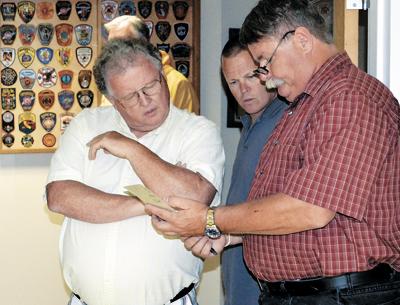Montauk Beach House Issued a C of O
Montauk Beach House Issued a C of O
The Montauk Beach House, a motel and club in downtown Montauk, received a certificate of occupancy from the East Hampton Town Building Department on Tuesday, after the head building inspector agreed that the key issue — whether it was operating two different businesses — was a matter for the town’s Ordinance Enforcement Department.
“I look at it, and it looks like a duck,” Tom Preiato, the building inspector, said Tuesday. Although he had previously said two businesses were at the site, which would trigger full site plan review by the planning board, he said on Tuesday that the fact that the club offers memberships for $1,100, in addition to 33 rooms for rent, is irrelevant unless actual invoices for club transactions can be produced.
The planning board gave the Beach House unanimous site plan approval for a bar and gift shop without considering the overall site, following a public hearing on May 8. The conditions of approval, which were written by Kathryn Santiago, the attorney for the planning board, include a statement that the Beach House “shall not conduct said activities without proper approval,” referring to those activities offered by the club.
There is no question that the motel at the Beach House is legal, even though the property is zoned for business rather than motel use, because it pre-exists that zoning. Mr. Preiato had previously said that the ownership team, Larry Siedlick and Chris Jones, could expand the use and run a nightclub or music venue, but only if they received approval after undergoing full review.
In a memo to Ms. Santiago on May 10, he wrote, “It appears that is an additional use on the property, even though it is not clearly defined in the code.” He goes on to say allowing persons who are not motel guests to use the facilities, “would be a burden on the public” because it already has inadequate parking. Besides the parking issue, he wrote that allowing such expanded use would strain the septic system.
Had the Beach House been required after undergoing full review to provide additional parking or pay into a town parking fund, the stakes would have been high. The Montauk Brewery, for example, which is nearby, had been asked to kick $45,000 into the fund, although the town board eventually voted to allow the brewery to count three spaces in an adjoining lot.
Patrick Schutte, who along with Robert Schaeffer is the longest serving member of the planning board, addressed the issue at a meeting in January. “I can name 10 other applicants who had to pay into it. . . . I don’t think the town board or we can grant an easement on this.”
The $45,000 fee the brewery faced would seem dwarfed by the potential fee for the Montauk Beach House. According to the town code, a “nightclub, disco, tavern, bar, or dance hall” is required to either have on site, or else to pay into the parking fund for, “two [spaces] for each three persons of rated capacity, plus one per employee.” Using that formula, the total number of spaces needed to be provided or paid for by the Beach House would be about 290, including the motel side of the business, which would trigger another 1.25 for each of the 33 bedrooms.
None of the spaces surrounding the site would count toward that number, according to the Planning Department, because they are in the public right of way. Using a $15,000 per space estimate for the Montauk Brewery, the Beach House fee could be as high as $4.35 million.
Meanwhile, heated rhetoric has continued to be exchanged among the Beach House’s detractors and supporters. Terry Casey, who said he was responsible for booking live music and D.J.’s during the club’s initial season, and who said he was dissuaded from speaking at the May 8 hearing, has posted a recording of a phone message he alleges is from Mr. Jones on YouTube.
In it, the speaker says, “You’re going to be in trouble. If you wish to discuss this, please give me a call, otherwise, good luck. You’re [inaudible] two partners with $200 million behind them. You have taken this to a position that is untenable.”
Told about the recording last month, Mr. Jones said it was not his voice and pointed out that Mr. Casey is a D.J. and undoubtedly familiar with mixing and looping recordings.
After the May 8 hearing, Mr. Casey said he wrote a letter to the board, detailing his allegations about the numbers of people who had come to the Beach House when he worked there. Because the letter was submitted after the hearing was closed, it was not considered part of the record.



